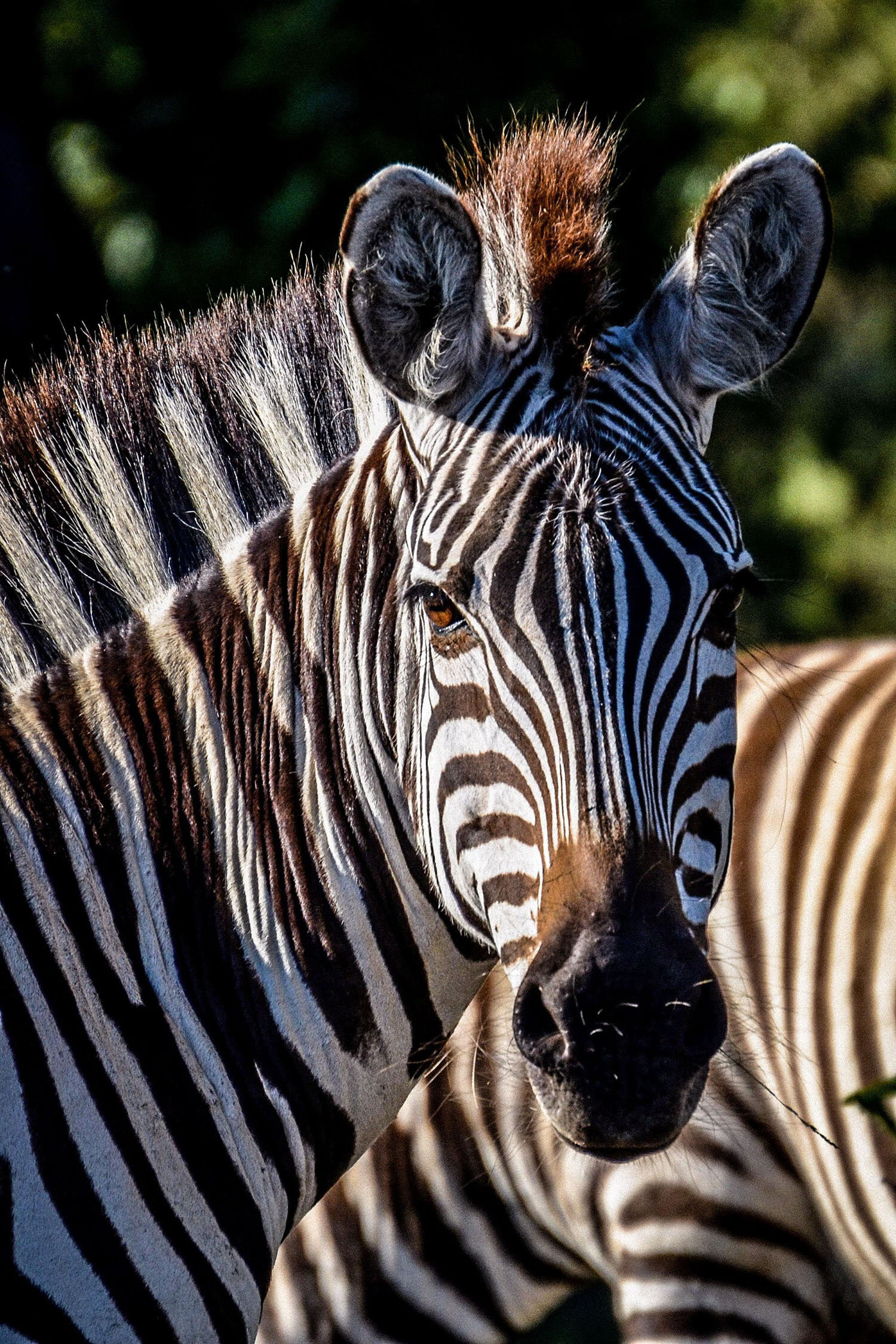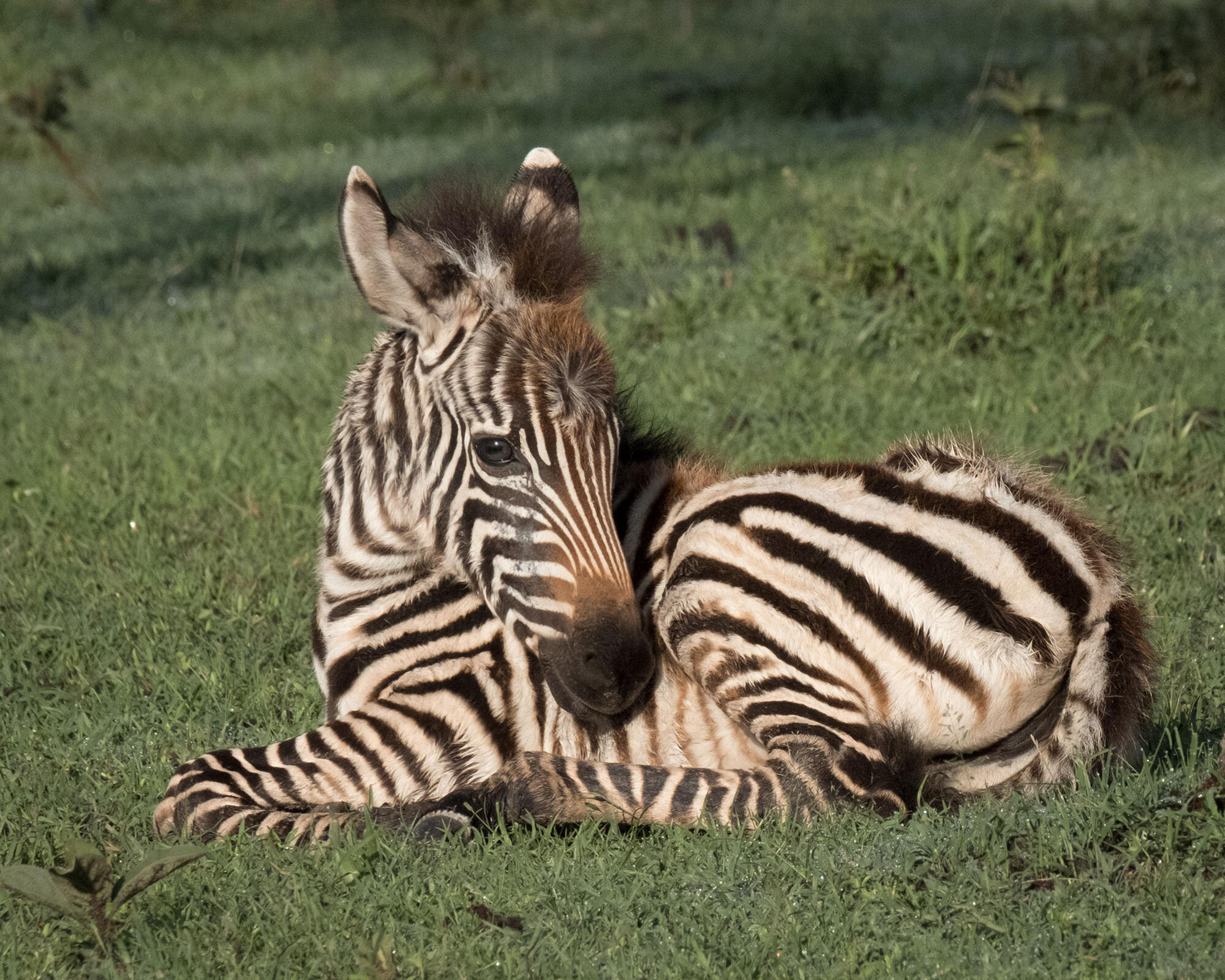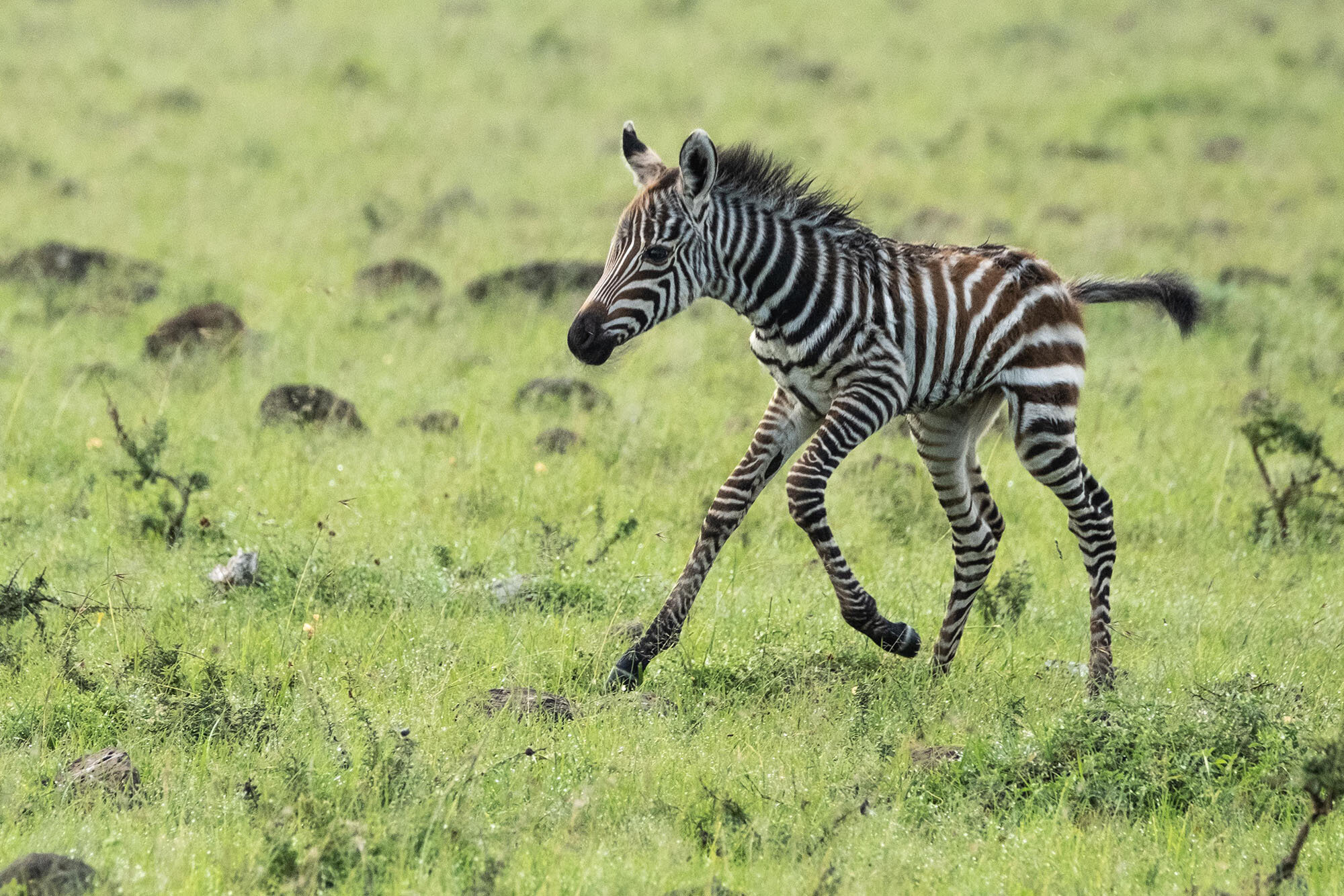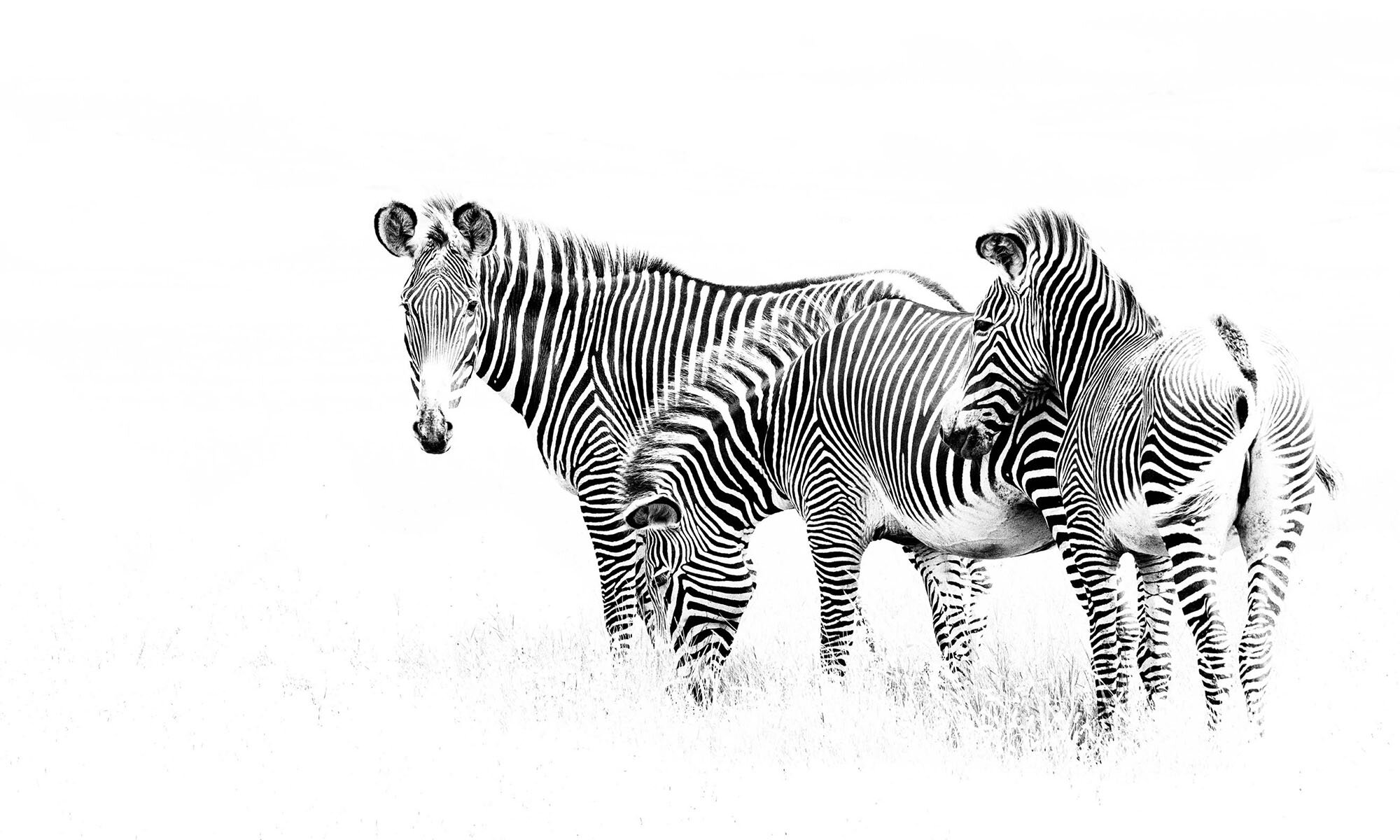Wildlife Photography – The Bum View from Here
Several readers have asked me, “How do you get the animals to look at you?”
Photographing animals in the wild involves an interesting dance between slow and fast; patiently waiting for a photo while simultaneously staying ready for that fraction of a second when it all comes together. The drivers and spotters on a game drive do their best to set up an image, but wild animals have a mind of their own. Zebras instinctively turn away from people in case they need to make a run for it. I have proof—hundreds of bum views!
One morning we came across a large zebra herd. They raised their heads and pricked their ears towards us as our vehicle approached. I checked my settings. It is essential you know your camera inside and out. You don’t want to be fooling around with settings when a photographic opportunity presents itself. The scout motto “Be prepared” is a good one for wildlife photographers too.
Zebra patterns inspire designers and photographers alike. It’s as if a talented calligrapher dipped a brush in ink and decorated each little horse by hand. Every pattern is unique. Could I get a portrait, or an interesting group image highlighting their patterns? As if on command, 100 animals turned their backsides to me. Only a young foal stayed curious enough to keep watching us as we drove forward.
Since Zebras are grazers, I also got lots of pictures with their faces buried in grass. Not very captivating!
I’ve learned over dozens of game drives that if we stay quiet and the herd senses we are not a threat, and if the animals stay put and don’t move on like grazers often do, and if the light is right … then sometimes it all comes together.
Even when the animal looks at you, sometimes grass, branches, or other animal parts get in the way. Often, I don’t discover these photo bombs until I’m processing an image.
Understanding animal behaviour is helpful. When you can anticipate a move, then you have a better chance setting up an image. Capturing an animal’s specific gesture can tell a story. I grew up with horses and recognize when a horse is going down to roll. A zebra on its back offers a different point of view.
Baby animals make great photographic subjects. Zebra foals are sweet and fragile looking, but don’t be fooled, they can stand 10-20 minutes after birth and even run within the hour if they need to. They weigh about 70 pounds and have long legs making them almost invisible to predators when they stand close to their mothers.
One morning we came across a “harem” of zebra mares with several newborn foals. Talk about cuteness overload!
I prepared to wait out the initial bum views. In time we were rewarded, and the foals did what foals do best—play, sleep and eat.
Zebras are natural subjects for black and white photography. One of my favourite zebra images is of three endangered Grevy zebras from the Lewa Wilderness Conservancy. Bum view, head down and face front are united in this picture. What makes the photo work for me is the composition. The curving line of the zebras leads the viewers eye from the closest (bum view) to the farthest (eye contact). The black and white stripes add pattern and interest.
Taking time to watch and hang out with wildlife is a doorway to nature’s marvels. We can learn a lot when we take time to observe wildlife in their natural habitat. Every animal plays a role in the ecosystem. Zebras are grazers. They cut back old growth and consume lower quality plants increasing the overall quality of grasslands as they travel. This in turn clears the way for new growth for other herbivores like antelopes. Zebras are also an important source of food for predators like lions and hyenas.
What have you learned from observing wildlife in your neighbourhood? I’d love to hear from you! You can leave your comments below.














